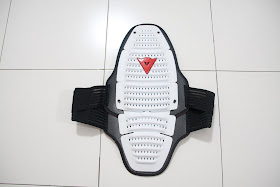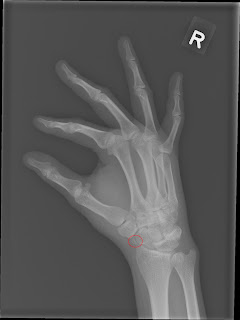The Rear Sets
For my 2011 Yamaha R6, I got the FTRYA002. You may want to check LighTech's website to find out which model suits your bike.
Inside the packaging, you'll find the rear sets, the necessary nuts and bolts, and the installation manual. The installation is pretty straightforward, but I would recommend that you let an experienced mechanic do the job if you're not confident.
Adjustability
The pegs can be configured to 1 of the 8 possible positions, 2 levels for height, and 4 positions for forward and backward adjustability.
I stand at 1.77m tall or about 5"10, and I wouldn't recommend the LighTech if you're a lot shorter than I am because you would probably need 1 more level of height adjustability. The peg position seen in the photos above is comfortable for me for track riding, and works for street riding too with just a bit of discomfort. This is how I remind myself that the R6 is meant for the track, not the streets. Or maybe I'm just too lazy to keep switching the peg positions.
Grip
The grip is excellent. I have been riding with the LighTech rear sets for about 3 months now, and have been to the race track twice. No slippage, not even in heavy rain with my leather dress shoes. What can be better? The soles of my shoes still look the same, no signs of wear and tear caused by the pegs.
Features
The gear shifter on my R6 has been configured for GP shift, or reverse shift. LighTech states this as a feature in their specifications, but to me, it's just simply flipping the pivot of the shifter rod around.
Zoom in on the top left part of the photo below to locate the metallic pivot of the shifter rod, which is pointing to the right, or rear of the bike. For regular shifting, the pivot should be pointing to the left, or front of the bike.
Unfortunately, the shifter rod when configured for GP shift, would rub against the stock R6 plastics. I had to cut a small section to make space for the shifter rod. See photo below to understand what I mean.
Price
The rear sets were SGD$660. I ride the bike on the streets too, so add in an additional SGD$70 for the rear brake light switch, which brings the total amount to $730. I must admit it's not a cheap investment but it is the one of the best upgrades I have made to my R6. Good control ergonomics prevents you from tiring out too quickly, and that translate to more confidence because you feel at ease on the bike.
Verdict
LightTech rear sets are one of the best rear sets that money can buy, they are used in some of the best teams (Tech 3 Yamaha) in MotoGP, SBK, and by many other pro-level race teams. There is no doubt that LighTech makes quality rear sets.
The only gripe I have about them are the lack of 1 more level of height adjustability. Other than that, they are pretty much perfect.
One more thing that I like about LighTech rear sets is that the parts can be bought separately. In the event of a crash, you would just need to replace the damaged part and not the whole rear set.
Also, check out a video of the rear sets in action.
The LighTech rear sets deserve a good rating.
RB Rating: 8 / 10
Ride safe.


































